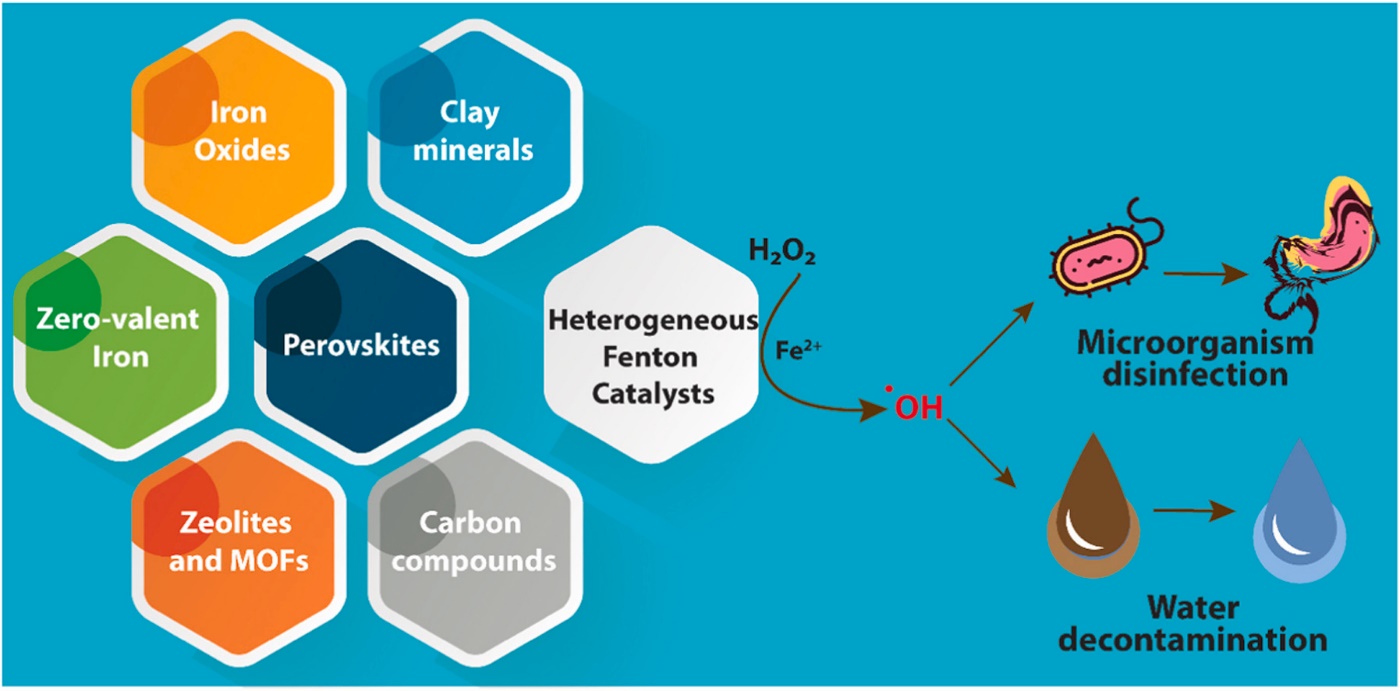Nishanth Thomas
Current PhD Student
Development of Functional Materials for Photo-Fenton and Electrocatalysis
Research Project Summary:
Nishanth Thomas joined IT Sligo in August 2019 and currently working in the EU Horizon 2020 PANI Water Project. The PANI Water is an India-European Union collaboration project which aims at developing low-cost methodologies for drinking water treatment. Developing innovative techniques for the removal of contaminants of emerging concerns (CECs) from water is one of the key areas of research of this project. As part of the PANI Water project, Nishanth is working on synthesising heterogeneous catalysts for photo-Fenton applications.
In a Fenton reaction, Hydrogen peroxide reacts with Fe(II) to generate hydroxyl radicals (•OH). However, it is a challenging task to recover the Fe(II) because of the inherently slow Fe(III) to Fe(II) reduction kinetics. Since sunlight can accelerate the Fenton process (photo-Fenton process), it is explored as a cheap alternative. [Fe(OH)]2+ is the crucial photoactive Fe(III) complex under solar light and is predominantly present at low pH of 2.8. In the presence of light irradiation, [Fe(OH)]2+ species get reduced to Fe (II), and that in turn generates further •OH and enhances the contaminant degradation.
The most desirable pH for the homogeneous photo-Fenton reaction is reported to be 2.8. Even though photo-Fenton reactions are highly efficient in oxidising different contaminants, a pre and post-treatment of water is required to perform the reaction at pH 2.8. Also, when the pH of the solution is increased to neutral, that leads to iron sludge precipitation as iron hydroxides. The major pitfalls of the homogeneous photo-Fenton reaction are its narrow pH range and the need to remove iron sludge after the reaction; both these add up to the cost of water treatment. However, the heterogeneous photo-Fenton reaction can perform the water treatment at around neutral pH. Here, Nishanth is developing low-cost, efficient, visible-light responsive nanomaterials for performing the photo-Fenton reaction.
Nishanth’s research interests also involve:
- Synthesis and characterisation of different 2D nanomaterials and their iron composites.
- Photo-Fenton studies of the synthesised catalysts for the degradation of Contaminants of Emerging Concerns (CECs).
- Photocatalytic hydrogen evolution studies of 2D nanomaterials.
- Understanding the ability of 2D nanomaterials for the removal of Antibiotic-Resistant Bacteria (ARBs) and Antibiotic-Resistant Genes (ARGs)
Different classes of nanomaterials used as heterogeneous Fenton catalysts are summarised in Figure 1.

Figure 1. Schematic illustration of heterogeneous Fenton catalysis.
Research Experience:
Before joining IT Sligo, Nishanth completed his BSMS dual degree in Chemistry (major) with a Biology minor from the Indian Institute of Science Education and Research (IISER) Bhopal, India. During his master’s thesis, he got hands-on experience in the synthesis of various morphologies of silver nanostructures and characterised them by Powder X-ray diffraction (PXRD), Energy-dispersive X-ray Spectroscopy (EDS), Dynamic Light Scattering (DLS), Transmission Electron Microscopy (TEM), Scanning Electron Microscopy (SEM) and UV-Visible spectroscopy.
Being passionate about research, he undertook summer research projects on Graphene Quantum Dots (GQDs) at the Indian Institute of Space Science and Technology (IIST), Thiruvananthapuram. During the summer project, he synthesised the GQDs by hydrothermal treatment of Graphene Oxide (GO) and characterised the GQDs by Atomic Force Microscopy (AFM) and fluorescence measurements. Later he demonstrated the selective detection of Ni2+ ions by the GQDs.
Papers
(1) Thomas, Nishanth, Dionysios D. Dionysiou, and Suresh C. Pillai. “Heterogeneous Fenton catalysts: A review of recent advances.” Journal of Hazardous Materials (2020): 124082. (https://doi.org/10.1016/j.jhazmat.2020.124082) (one among the top downloaded articles in the Journal of Hazardous Materials)
(2) Padmanabhan, Nisha T., Nishanth Thomas, Jesna Louis, Dhanu Treasa Mathew, Priyanka Ganguly, Honey John, and Suresh C. Pillai. “Graphene coupled TiO2 photocatalysts for environmental applications: A review.” Chemosphere (2021): 129506.
(https://doi.org/10.1016/j.chemosphere.2020.129506)
(3) Nishanth Thomas, Snehamol Mathew, Keerthi M Nair, Kris O’Dowd, Parnia Forouzandeh, Amit Goswami, Gerard McGranaghan, Suresh C. Pillai. “2D MoS2: structure, mechanisms and photocatalytic applications.“ Mater. Today Sustain. (2021): 100073.
(https://doi.org/10.1016/j.mtsust.2021.100073)
(4) Nishanth Thomas, Amit Goswami, Kris O’Dowd, Gerard McGranaghan, Suresh C. Pillai. “2D materials for wastewater treatments.” (accepted book chapter)
You may read more about his research below.
Google Scholar link: https://scholar.google.co.in/citations?user=xruLxckAAAAJ&hl=en&oi=ao
